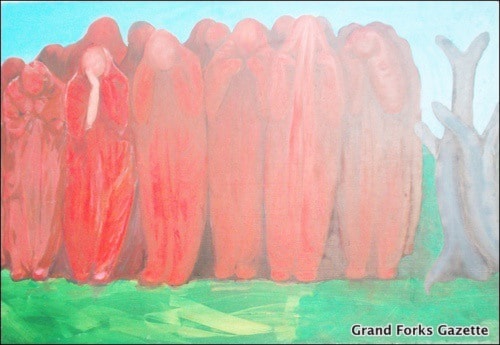The last Art Palette column offered the premise that creativity benefits the individual and that there are many healing, liberating and life-enhancing experiences to that process.
Peter London, artist/author/teacher, asks: “What is art? It is not the thing ... it is the process.”
Just as writing is the process and the book is the product. University studies are the process; the degree is the product.
The act of creating is the process and the piece of art is the product.
A beautifully presented meal, a pleasing blend of colours in a room’s decor, a delightfully laid out garden and inhabiting a character in a play are products of the creative process in an individual. And we live in the process, not the product.
Rollo May, author/existential psychologist, asks, “What if imagination and art are not frosting at all but are the fountainhead of human experience?”
Perhaps the original source of human experience he refers to is most clearly seen in the wonder of a child seeing the world without preconceptions, delighting in imagination, not yet overwhelmed by conformity. Traditional child-rearing practices can stifle or crush the “fountainhead of human experience” because of the focus on “the thing” rather than the “process.”
Work, chores, duty, obedience, responsibility are elevated as desirable products, when they too, are first and foremost a process needing to evolve (like a painting) over time.
The focus on an instant product ignores the life-enhancing process that can be there.
Thinking outside the box is usually judged as willfulness in the young, midlife crisis in the mid years and eccentricity in older individuals.
Society is made up of individuals. If imagination and art are left to a few, with most obeying conformity, society cannot evolve.
Imagination and art are in everything and everybody and embracing their appropriateness would be an enormous benefit to society, freeing society to be all that it could be.
Inviting comments about the anonymous painting of the group shrouded in red cloth resulted in the following suggestions: a lack of individuality and identity, frustration that the faces are not visible, a physical depiction of faceless conformity, the characters were blind to their fate but at least not alone, feeling smothered, hope in the stirring of the figure second on the left and seeing the beginnings of change in the group.
What of the judgment of whether the painting was good or bad? Kicked to the curb in favour of being in imagination – the process.
And what of the tree? Finger-like, torso-like, naked . . . but that’s a whole other column, pun intended.
What do you think?
If you would like to talk about your art or comment on what you see here or would like to see here, we can be reached at artpalette@hotmail.ca.
